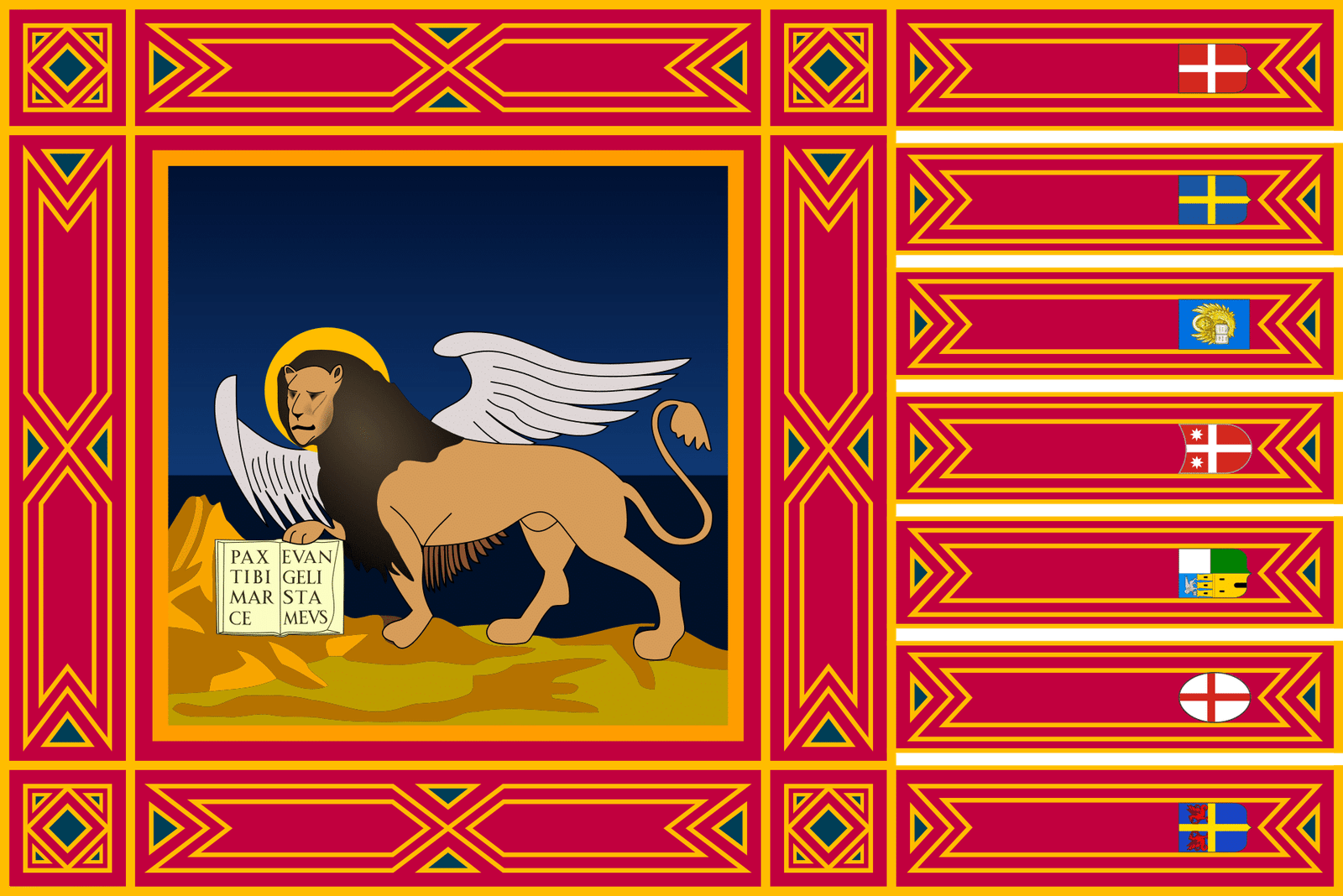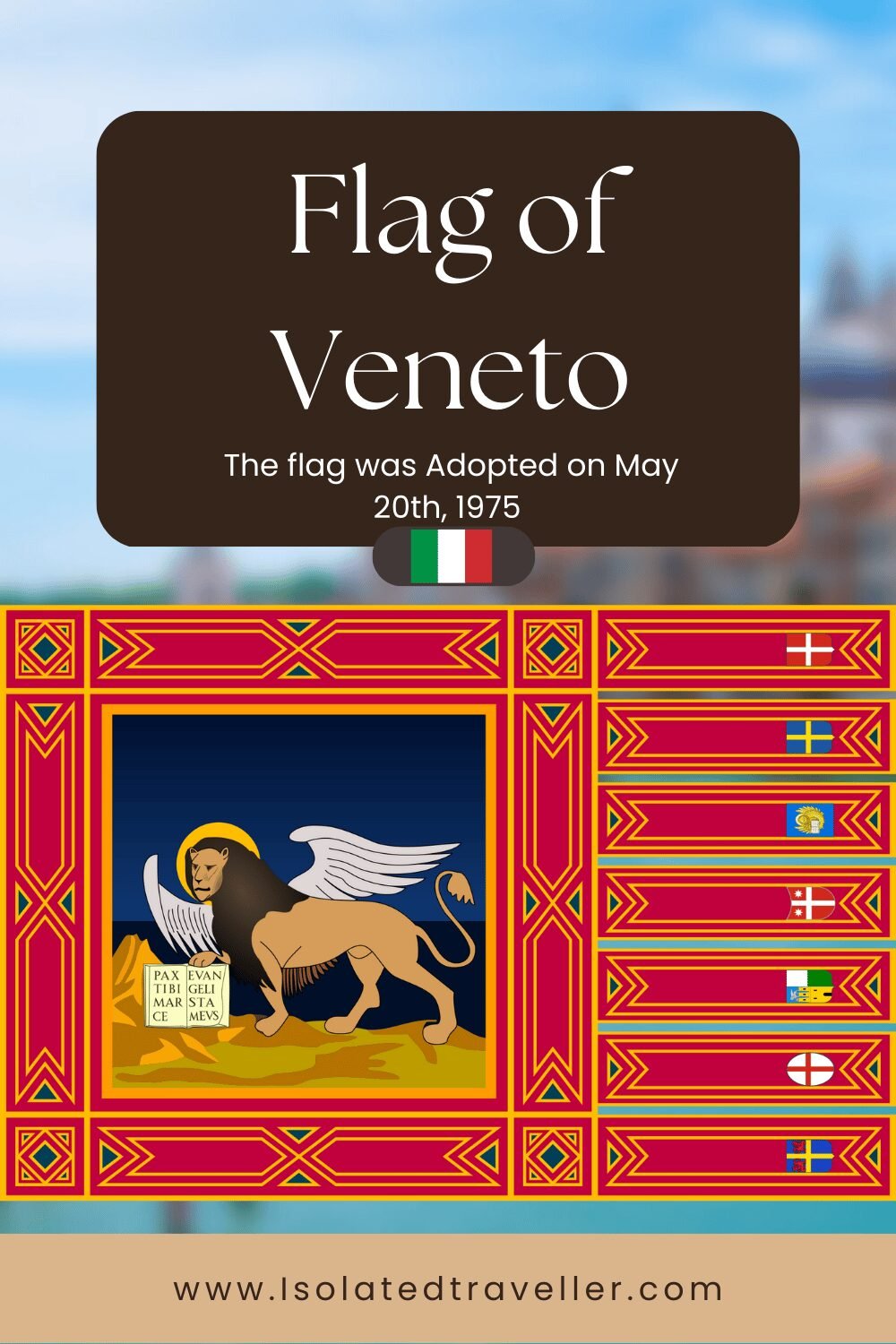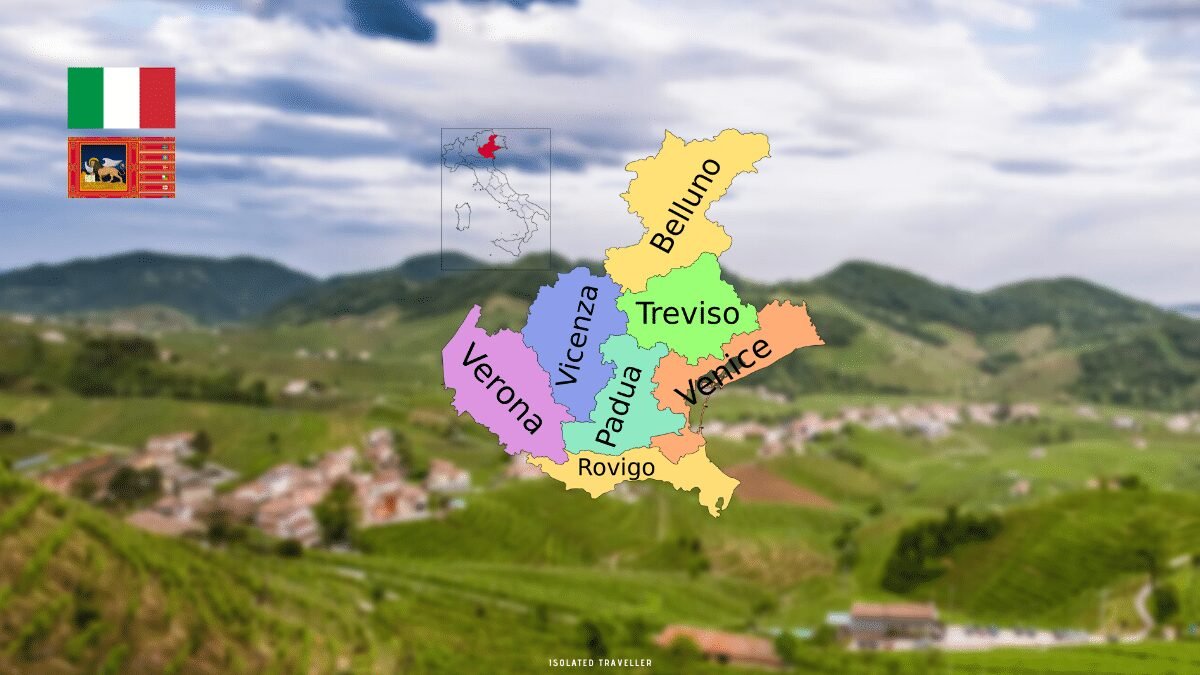Flag of Veneto
The flag of Veneto is a rectangular banner with the coat of arms of the region in the centre, which features the Lion of Saint Mark with the opened gospel, reading the Latin motto “Pax Tibi Marce Evangelista Meus”, translated to “Peace to you Mark, my evangelist”, resting its paws on the landscape of Veneto. The flag also has seven tails attached to the fly edge, each bearing the coat of arms of one of Veneto’s seven province capitals, sorted in reverse alphabetical order:
- Province of Vicenza
- Province of Verona
- Province of Venice
- Province of Treviso
- Province of Rovigo
- Province of Padua
- Province of Belluno
The flag was Adopted on May 20th, 1975 and is used as a symbol of the Italian region of Veneto and is displayed on government buildings, public spaces, and at events and celebrations. In 2011, Veneto became an autonomous region within Italy, with its own government and laws.
The flag of Veneto has the following Differences from the Republic of Venice flag:
- The tails were six, representing the six sestieri (“sixths”, the districts of old Venice), whilst the new flag has seven tails, containing the flags of the provinces of Veneto.
- The lion has been redesigned and is no longer fully golden.
- The Lion is no longer on a red field.
- Dark blue has been added to the red and gold decorations, as this colour was acknowledged as a symbol of the Veneti in the past.

Veneto Region
The region of Veneto is a northeastern region of Italy, along the Adriatic Sea. It is bordered by the regions of Friuli Venezia Giulia, Trentino – Alto Adige, Emilia Romagna, Lombardy, and a small stretch of Austria to the north. The region’s capital is Venice, and it is divided into seven provinces: Venezia, Padova, Verona, Vicenza, Belluno, Rovigo, and Treviso.
The population of Veneto is around 5 million, and it is spread out across the region’s cities, plains, lagoon, hills, and mountains.
Veneto was once part of the Republic of Venice, a maritime republic that was a significant power in the Mediterranean from the 9th to the 18th centuries. Today, Veneto is known for its cultural and artistic heritage, as well as its natural beauty. The region is home to many museums, galleries, and historical landmarks, including the Palladian Villas, a group of villas in the Veneto region that are UNESCO World Heritage Sites.
The region is home to a diverse economy, with a mix of agriculture, manufacturing, and tourism. It is also known for its wine production, with famous wines such as Prosecco and Amarone Della Valpolicella.


